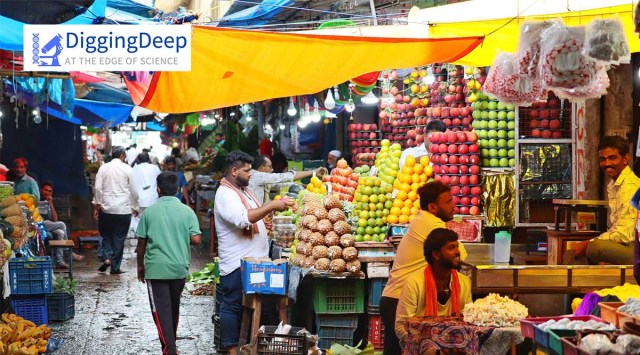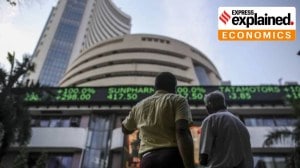- India
- International
Digging Deep: Why EAT-Lancet’s diet to save the planet remains inaccessible in rural India
The EAT-Lancet Commission recommends the least expensive, sustainable, nutrition-rich diet for various parts of the globe but it remains inaccessible for rural India.
 Image for illustrative purposes. (Image credit: Pixabay)
Image for illustrative purposes. (Image credit: Pixabay)In a 2019 report, the EAT-Lancet Commission – a group of public health experts, environmental scientists and policymakers from 16 countries – had recommended the least expensive, sustainable, nutrition-rich diet for various parts of the globe, including rural India. The diet consisted of fruits, vegetables, grains and legumes, as well as poultry, fish and dairy. But, the question of whether these diets are really accessible to the rural Indian still remains.
In order to address this, a recent study led by a team of food security researchers from the Tata Cornell Institute for Agriculture and Nutrition at Cornell University, compiled food prices and household purchases, and secondary data on food expenditure, for a period of 12 months from 2018-9. Primary data on food prices and household purchases came directly from the Tata Cornell Institute’s TARINA programme, which, in 2018-19, carried out detailed market surveys in four districts in Odisha, Bihar and Uttar Pradesh. These surveys were conducted in village markets that were held on a weekly basis, and collected data on the food items available, their prices and number of vendors selling each item.
Overall, nearly 259 food items were accounted-for, categorised into nine food groups. This categorisation ‘permits us to quantify the affordability of specific nutrient-groups at a more granular level as compared to existing estimates that, for example, have combined all fruits and vegetables together as one group.’
Further, 160 households residing close to the markets were sampled for dietary diversity for parameters such as household size, proximity to the market, household-level food purchases. Attention was also paid to what women in particular ate and their time-allocation to different activities throughout the day. This was supplemented by (secondary) data on food expenditure, supplied by the Centre for Monitoring of the Indian Economy (CMIE). The CMIE provides food and non-food expenditure along similar parameters: household size, age, gender etc.
Using the aforementioned collected information, researchers computed the cost of the recommended diet by EAT-Lancet Commission as well as the cost of the ‘current’ diet (i.e. the food respondents in the study were actually reported to having consumed). When the cost difference between the EAT-Lancet and current diets is calculated, the study finds that people will have to spend at least $2.40 per day to meet the recommended EAT-Lancet level.

The cost of the actual observed diet is between $0.62 and $1.00 per day. By contrast, the cost of the EAT-Lancet recommended diet is $3.00-5.00 per day going by the minimum and average prices for each food category respectively.
What could explain these observations? Price variation is a key factor, the study argues. For some of the districts surveyed, the average cost – especially for dairy and meat/fish/poultry (MFP) – is as much as twice or thrice the minimum costs. This is reflected in the cost shares (the percentage amount spent on a food item out of the total expenditure) of different food groups.
In an email interaction with The Indian Express, Dr Soumya Gupta, lead author of the study, explains, “Fruits are cheaper than other food groups, like MFP, dairy and pulses (some of the months). But if we look at the minimum and average prices for the same food group, then the difference is significant for some foods. This is clear with fruits, where the average price is around twice the minimum price, in contrast with dairy, where there is not much difference between average and minimum price). These differences in minimum and average prices are reflected in the minimum and average cost of the recommended intake of each food group. That is where you see that average cost of fruits and even MFP is twice the minimum”
Here, a comparison is made about the share of MFP in total cost (in US dollars per person per day) versus the share of MFP in total recommended dietary intake (in grams). “Both the shares are related to the EAT-Lancet diet, and not the current/ actual diet. So, if we look at the share of MFP in total cost (approximately 30 per cent), then it will be high since the price of MFPs is high. This is compared to the share of MFP in recommended intake based on grams recommended, which is 6.3 per cent. The point is that to meet 6.3 per cent of total recommended dietary intake, it will require about one-third of the total cost of the recommended dietary intake,” adds Dr Gupta. In order to meet the EAT-Lancet diet, “the greatest increase in spending is required in three non-staple food groups: MFP, fruits and dairy.”
Seasonality also contributes to price variation. For instance, the minimum cost of the recommended EAT-Lancet basket is $2.90 per person per day in June. It rises up to $3.70 per person per day by April. The same computed based on average cost can be higher than $6 in October-November and March-April. People also spend the least on their current diets during these months. Naturally, these months also show the biggest deficits between the cost of actual and recommended diets. Part of this could be due to the harvest cycle. The months of Nov-Dec and Mar-Apr are just before the harvest cycle – so both supplies and household incomes are quite low around this time. It is also important to note that fruits and vegetables – while having lower absolute prices – show much higher seasonal price variation than MFP and dairy products during these months.
Speaking on the variations in the prices of different food groups and how those relate to the variations in the cost of the EAT-Lancet diet, Dr Gupta says, “In that respect, the volatility in prices of fruits is much higher than that for, say MFP/ dairy. It also ties in with the fact fruits are one of the three food groups where the deficit in spending is the highest.”
Food groups such as MFP, fruits and vegetables show ‘considerable variation’ in their prices during a year. These food groups, being an expensive source of nutrients, contribute to ‘eighty per cent of the diet costs in South Asia.’ The study highlights the importance of high-frequency ground zero market surveys in order to map the seasonal price variation and food availability across groups. Gupta et al. (2022) also argue for a departure from the fixation on staple cereal grains, like wheat and rice, in the currently practised agricultural regimes. There needs to be a transition, the paper argues, towards crop diversification that is more ‘nutrition-sensitive,’ which will also increase farm incomes.
The author is a research fellow at the Indian Institute of Science (IISc), Bengaluru, and a freelance science communicator. He tweets at @critvik
More Tech
Apr 16: Latest News
- 01
- 02
- 03
- 04
- 05







































